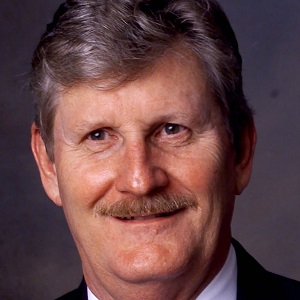Imagine a world where flatbed transportation operates with the utmost safety, compliance, and efficiency


Learning Without Scars is pleased to introduce our new guest writers, Dan Shipley and Dan Kinsman. Today brings their first blog post for us here at LWS, with “Imagine a world where flatbed transportation operates with the utmost safety, compliance, and efficiency.”
The Flatbed Safety & Securement Group (FSSG) envisions just that. Our mission is to revolutionize the flatbed industry by making safety the priority. We aim to support industry leaders in navigating the complex landscape of cargo securement including regulations education and best practices; while also giving drivers the tools they need to perform their jobs safely and education they need to be safe on the road while transporting a load.
Picture a team well-versed in the latest FMCSR and CVSA guidelines, working exclusively with you and your drivers, ensuring your operations meet and exceed regulatory standards. Envision thorough on-the-job training and online resources, including the FSSG ITF (Introduction to Flatbed) Handbook, covering general knowledge in the flatbed industry, best securement practices, and specialized transportation education. This would empower your team with the knowledge they need to secure and transport your loads safely and effectively.
Imagine brokers being knowledgeable about flatbed transportation, understanding the intricacies of securement, compliance, and weight management. This would lead to more efficient and safer operations, benefiting everyone involved in the logistics chain.
Additionally, picture a dedicated team that works with shippers nationwide, ensuring that transportation companies are equipped with proper securement guidelines for even the most intricate loads. This collaboration ensures that every shipment, regardless of its complexity, is handled with the utmost care and expertise. Saving everyone money.
To further our mission, we have partnered with Learning Without Scars to bring something special to the industry, enhancing our educational offerings and providing unparalleled resources to our members.
While FSSG is still in its formative stages, we are committed to becoming a leading force in flatbed safety and securement. We aim to partner with industry leaders to ensure fleets operate with the highest standards of safety, compliance, and efficiency.
Connect with us to learn more ✉️ sales@flatbed-safety.com
Daniel Kinsman Ron Slee Learning Without Scars LLC
As we work with the “two Dan’s” we are excited to be involved in developing learning programs for the Flat-Bed Drivers and in general the Flat-Bed Industry. Our platform of sharing information helps everyone to achieve their personal and professional potential. We aim to provide tools for everyone to continue their path to being all that they can be. These two men are the type of people that this country was built on and we are proud to be working with them.
Dan Kinsman biography:
I was introduced to the transportation industry at 7 years old, when I climbed into the cab of a setback axle Freightliner FLB, and 11 years later I would climb out of a truck, eventually joining the Marine Corps. Following four years of service, I returned to the industry, thinking it would only be for a short time.
I specifically chose to pursue flatbed, as it was extremely complex and something that would physically and mentally challenge me, as the amount to consider with securing every load was a challenge I looked forward to facing. I received expert training in 2012 at TMC, had even more knowledge poured into me by Big Mike at Hunt Transportation, and then all that knowledge was put to the test at AIM Integrated, doing local LTL flatbed, where a normal load would be 20,000 pounds, require 14 chains and a handful of straps to keep it all on the trailer.
I spent a lot of time further growing my knowledge of the rules and regulations to do my job better. In 2018 I moved from that account to driving a heavy haul truck for AIM, grossing 102,000 on a light 5 axle flatbed with multiple coils, I had to become an expert at weight management and securement, coils are unforgiving, and load securement has no room for error.
In 2021 I got married, and following some encouragement from my wife, in 2022 I chose to return to OTR, going to Miller Transfer, and further growing my knowledge and skill set. Over the years, I have been fortunate to assist in designing a specialty trailer for the transport of carbon black, pull a set of C-doubles, and pull kingpin steered trailers, grossing over 350,000 pounds over my driving career.
In 2022 I was pulled onto a scale in Hubbard, OH, they asked if I would be able to help do spot training of a driver, as he had no idea what he was doing, and this scale knew I was a trainer for my employer (AIM). I walked away from that and immediately looked for anywhere on social media where there might be people that would help this driver, and I found Flatbed Safety and Securement Group. I found a group that was looking to mentor and train new drivers, something I am passionate about, as all my former students would still reach out to me at times for advice or help. My new job taught me even more, lessons I shared with others, it also exposed me to how many drivers receive little to no training to pull flatbed, and that did not sit well with me. After some discussion with the group’s founder, we started to look at possibly moving it into being a business and service for the industry, with our eventual goal being to see a day when the only times a load leaves a trailer is when it is unloaded.
One fateful call resulted in meeting Ron Slee and Learning Without Scars, and we started moving from a dream to a plan.
Dan Shipley biography:
I started my career in the trucking industry in 2015 after graduating from Roadmaster Driving School in Columbus, OH. My journey to this point has been anything but conventional. Growing up without much structure, I dropped out of school at the end of the 9th grade but earned my GED the following year. Determined to make something of myself, I enrolled in Job Corps, where I studied Homeland Security: Security & Protective Services and became certified in corrections.
However, finding a career in that field proved challenging, likely due to my educational background. After the birth of my first child, I realized that working at a gas station wouldn’t be sufficient to support my family. It was then that I decided to pursue a career in trucking. After obtaining my CDL, my life took a wonderful turn when I met my wife. I fell in love with her on the first day we met, and we’ve been together for 9 years. I quit my first trucking job to move in with her, and together, we’ve built a home and welcomed our daughter in 2017.
Throughout my trucking career, I’ve had the opportunity to explore various functions within the industry, including dry van, reefer, end dump, dump truck, tanker, frameless end dump, flatbed, step deck, and open top trailers. This diverse experience has given me a well-rounded understanding of the industry.
When I began my career in flatbed, I quickly realized there was a lack of formal training available. Concerned about safety and the potential risks on the road, I decided to take action. Two years ago, I founded the Flatbed Safety & Securement Group (FSSG) to provide accessible training resources and ensure that drivers are well-prepared to operate safely and effectively. Today, FSSG boasts a following of over 8,400 members and continues to grow each day.
The group has received numerous compliments and praises for its structure and the support it offers. FSSG is recognized by several law enforcement agencies and numerous trucking companies of various sizes. My commitment to improving industry standards and my proactive approach to problem-solving have driven me to make meaningful contributions to the field.
I am passionate about continuous learning and dedicated to making a positive impact in the industry. My core values include safety, excellence, and innovation, which I strive to uphold in all my endeavors. My vision is to continue driving change and improving safety standards, ensuring that every driver has the knowledge and resources needed to succeed.
Did you enjoy this blog? Read more great blog posts here.
For our course lists, please click here.




